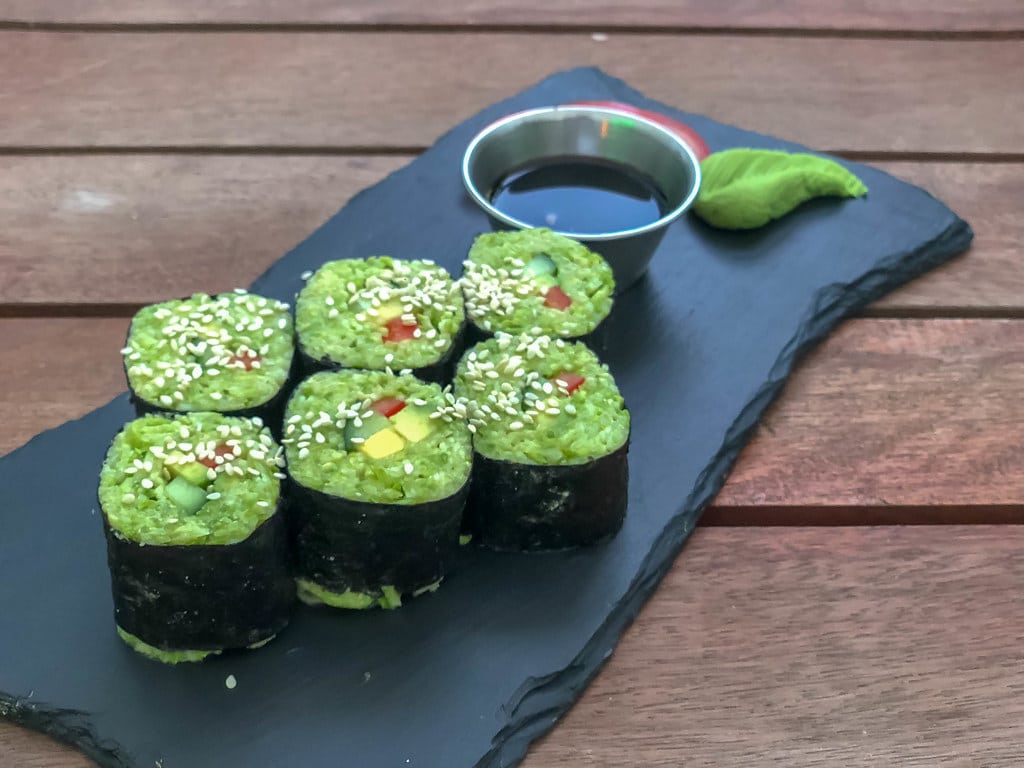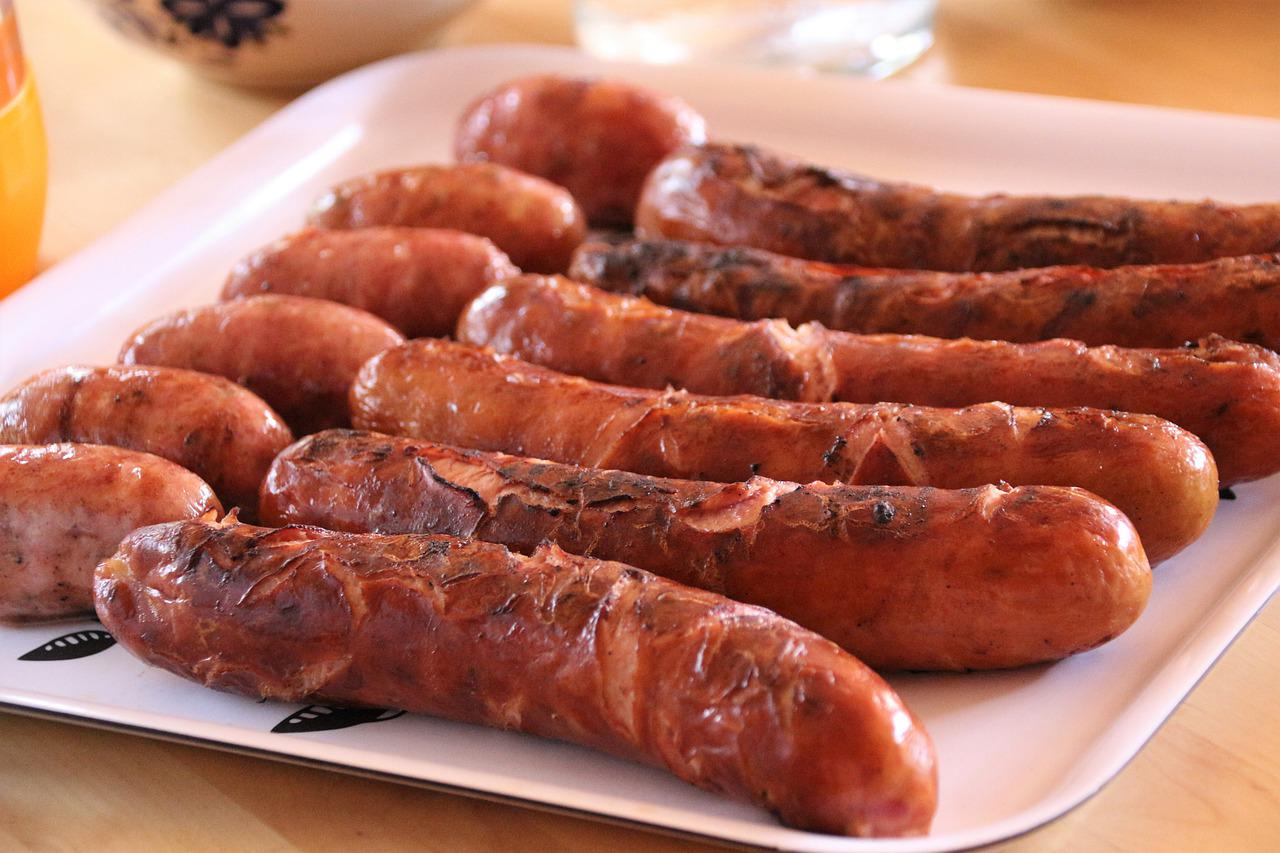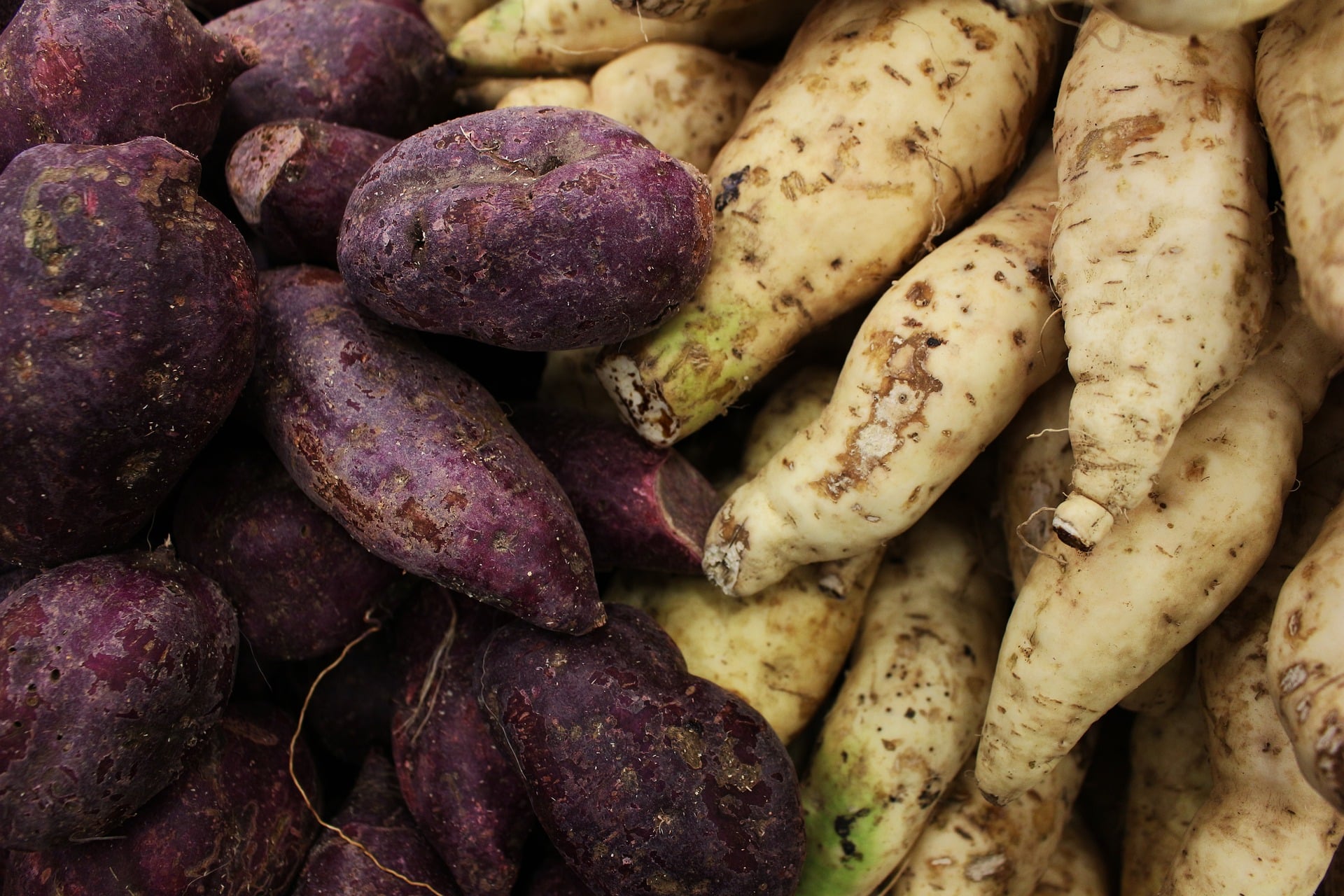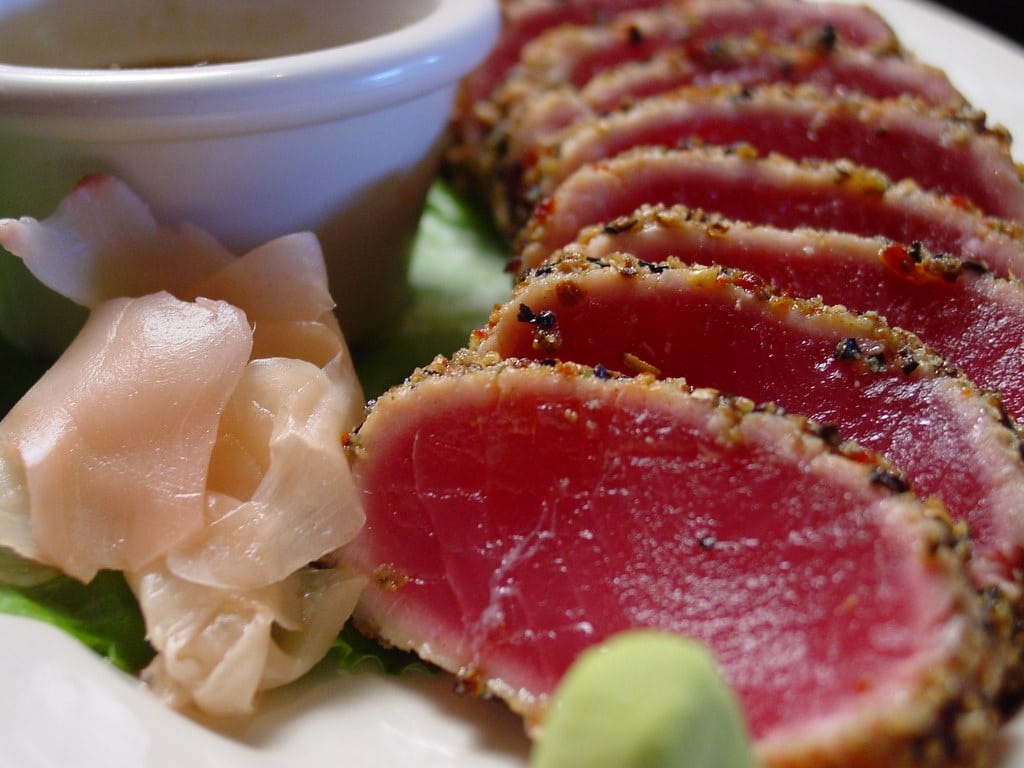- Paprika Chicken Wings using an Air fryer - December 27, 2025
- Smiley Fries Using Air Fryer - December 27, 2025
- How to make a savory salmon delicacy using a microwave - December 27, 2025
Biting into snacks that start with the letter L brings a flavor party to your mouth. Lemons deliver a sharp zing, while fresh lettuce snaps with a crunchy bite. Lasagna serves up warm, cozy flavors that stick with you. Juicy lychee and sweet loquats pop with surprises you don’t expect. Lentils pack a protein punch that boosts any meal. Limes splash bright, tangy notes that wake up your taste buds. Chocolate lovers find joy in Lindt chocolates melting smooth and rich. These L snacks turn eating into a fun ride, making each bite a tasty surprise. See how these L treats change meals in wild, exciting ways. Keep reading to unlock secret flavors that make every meal buzz with energy.
See the whole food dictionary!
Lablab
Lablab (Lablab purpureus) is a legume of the bean family, grown in tropical climates.
It is known for its purple flowers and green or light purple pods.
Each pod contains 3 to 6 oblong seeds, which can be brown, cream, black, red, or even speckled.
Pods including the seed, as well as lablab leaves, are rich in protein and iron.
Lablab is native to Africa, where it can be cooked in traditional soups, boiled with maize, or fried.
It is very popular in Asian cuisines as well, where it is consumed as a vegetable: boiled or cooked in soups, stews, curries, or tofu.
Ladyfingers

Tender and light finger-shaped sponge cake.
Ladyfingers are known as savoiardi in Italy and sponge fingers in the United Kingdom.
These delicate biscuits are usually dipped in coffee, milk, or liqueur and used as a soft base for cakes and other desserts.
Or they are served with ice cream, puddings, or a cup of coffee and tea.
Ladyfingers are an essential ingredient in classic Italian dessert tiramisu and famous Charlotte cake.
Lamb chops
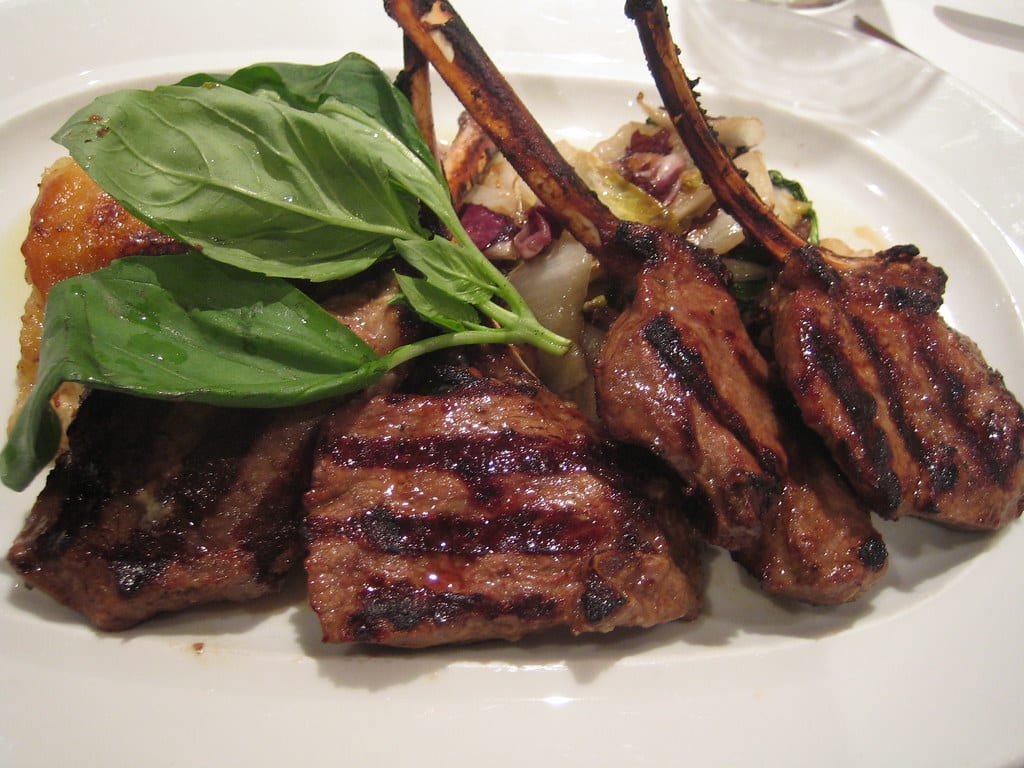
Lamb chops are cuts of meat from the top part of the lamb’s back, vertical to the spine.
They are individually served and usually contain a rib with tender, juicy meat, similar in appearance to a small T-bone steak.
Lamb chops are often marinated in salt, pepper, herbs, and garlic and fried or grilled in a skillet, or they can be baked in the oven.
Lard
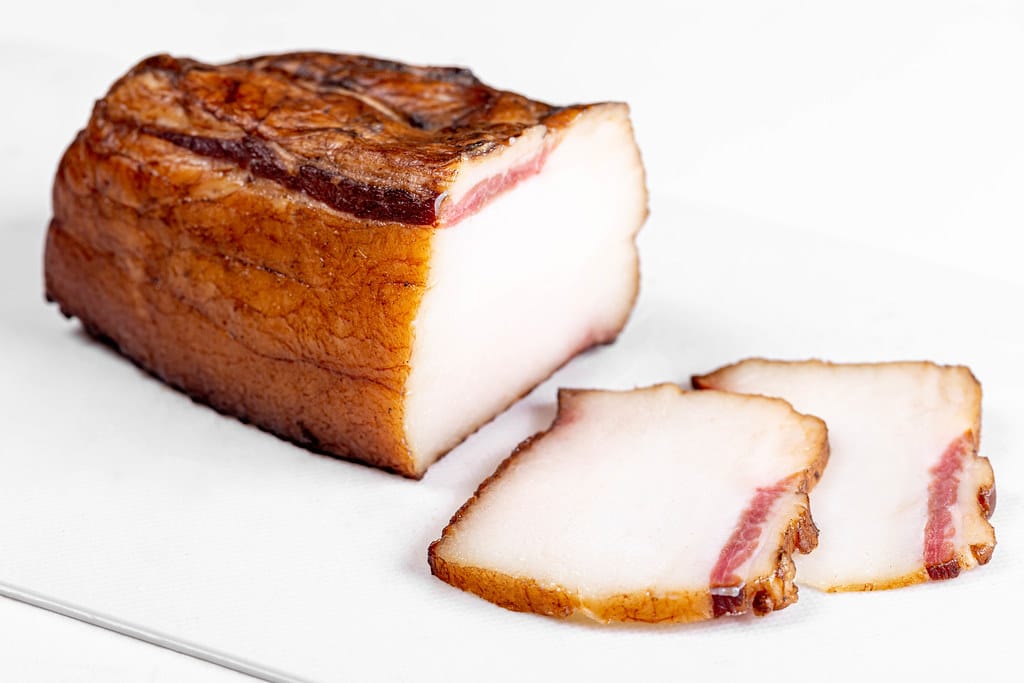
Soft fat made from the fatty tissues of pork.
It is white in color and semi-solid in texture, so it can be easily spread or melted under heat.
It is used in cooking instead of oil as it has a fairly high smoke point.
In baking, it is used as shortening in pie crusts and other baked goods.
In some cuisines, it is simply spread over bread and served for breakfast or as an appetizer.
Lasagne
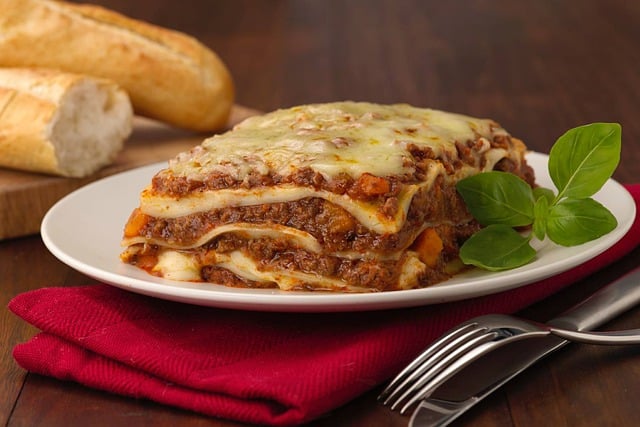
Lasagne (or singular lasagna) can refer to the wide and flat sheets of pasta, but also a baked dish made from stacked layers of this type of pasta filled with meat or vegetables, sauce, and cheese.
Lasagne originated in Italy, in the Campania region, in the 14th century.
Traditional dish has many variations, but the most commonly used recipe includes layers of thick Bolognese sauce and creamy Béchamel.
Latke
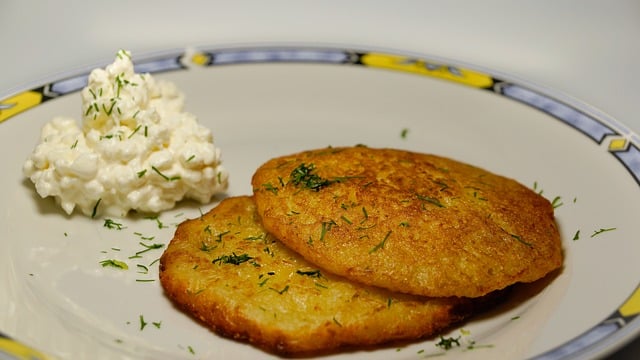
A latke is a type of potato pancake or fritters in Ashkenazi Jewish cuisine that is traditionally prepared to celebrate Hanukkah.
Latkes can be made with ingredients other than potatoes including cheese and zucchini.
At the time, the cheapest and most readily available cooking fat was schmaltz, rendered poultry fat (usually from a goose or chicken), and due to Jewish dietary laws, which prohibit the mixing of meat and dairy products, alternatives to the cheese latke were introduced.
These included buckwheat or rye flour, or other tubers endemic to the region, such as turnips.
As the potato became popular in eastern Europe, it was quickly adopted to the point that today, a latke is almost synonymous with potatoes.
Lava Cake
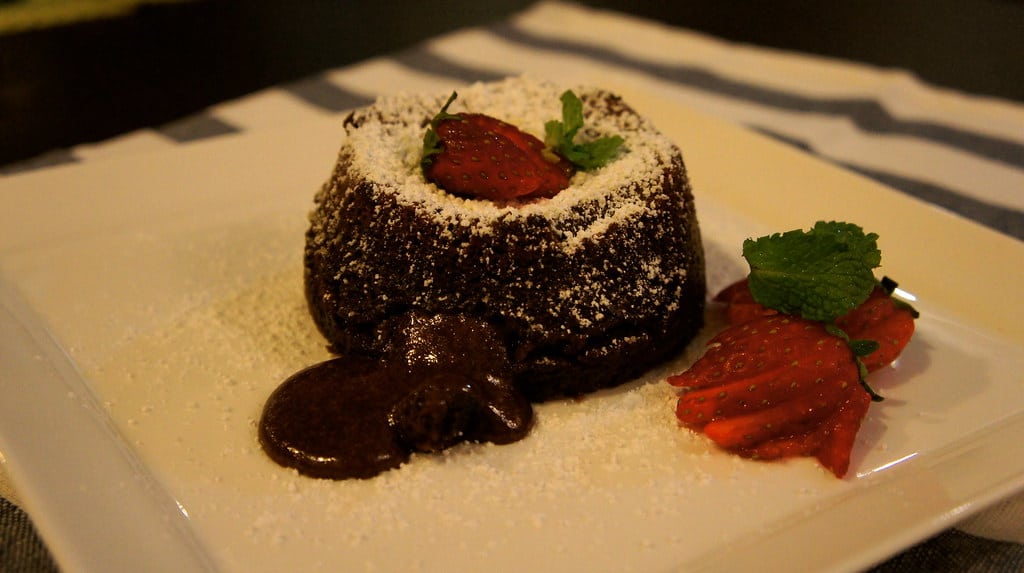
A rich and decadent chocolate cake known for its molten, liquid center.
Lava cake is made from flour, eggs, chocolate, butter, and sugar and baked in ramekins.
It is a combination of classic chocolate cake and delicate soufflé.
It is baked long enough to form a firm outer layer but to still remain soft inside.
This type of cake is always served warm, lightly dusted with powdered sugar or topped with vanilla ice cream, and garnished with fresh fruits.
Lavash
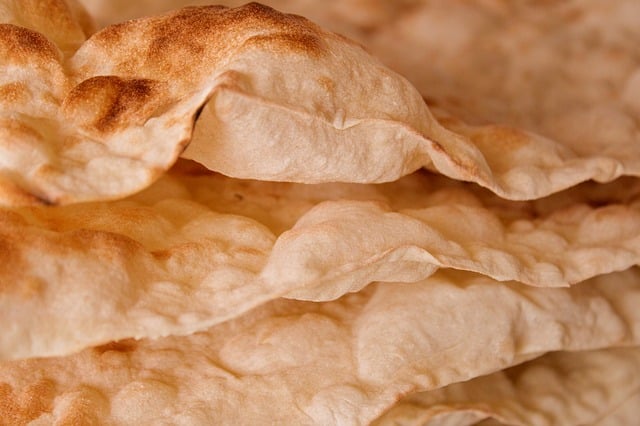
Lavash is a very thin flatbread, made from flour, water, and yeast, and seasoned with salt and sugar.
This type of bread is common to the cuisines of the South Caucasus and Western Asia.
Traditionally it is baked in a tandoor, a clay oven.
The dough is rolled out and baked pressed against the hot walls of the tandoor oven.
Lavash is eaten wrapped, filled with meat (like kebabs), vegetables, or cheese.
Leberkäse
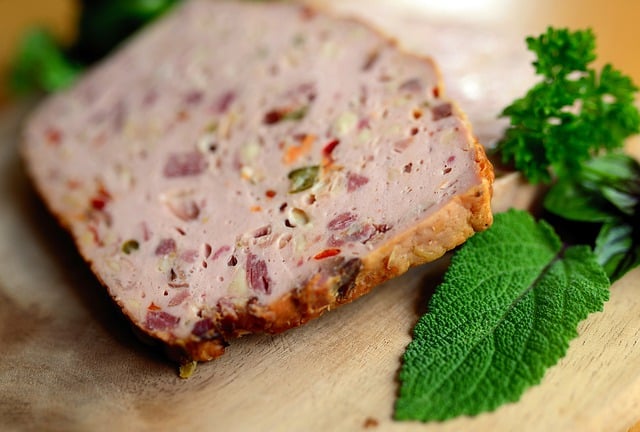
Leberkäse is a loaf-shaped meat delicacy made of finely ground beef, pork, and bacon.
Unlike what it says in the name (leberkäse is German for ‘’liver cheese’’), it does not contain any cheese, but it may contain a small percentage of the liver.
It forms a crispy crust when baked.
It is widespread in Germany (especially Bavaria), Austria, and some parts of Switzerland, where it is produced and served in many varieties.
Leek
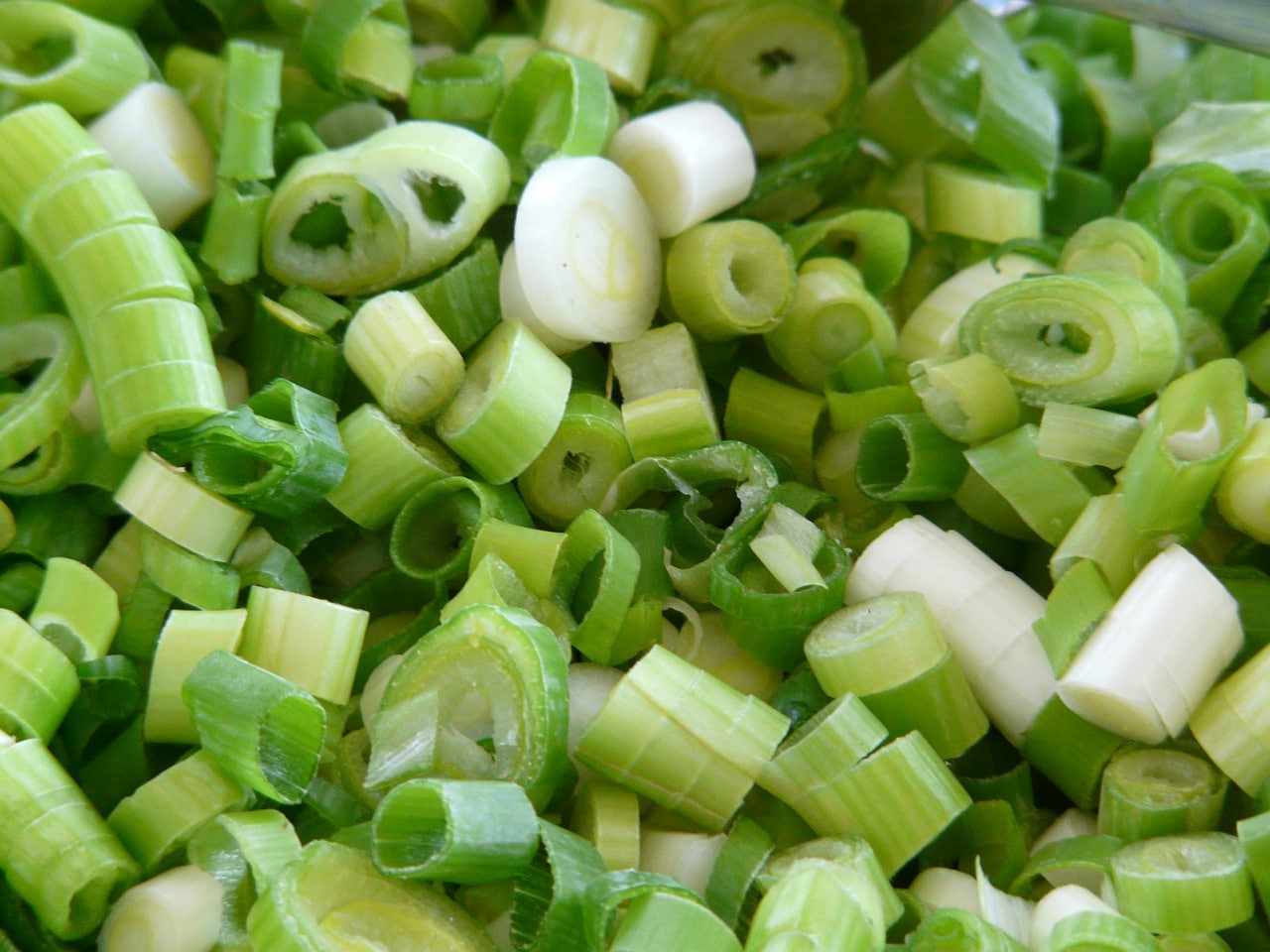
A vegetable with a long, thick white stalk and dark green leaves.
It is found in the genus Allium along with shallot, garlic, onion, chive, and scallion.
It resembles a large scallion, but it has a stronger flavor.
Leeks are also sweeter in taste than scallions and their texture is crunchier.
As a good source of vitamins A, B, C, and K, iron, and other valuable minerals, it is best consumed raw in salads, but it can also be boiled or fried.
Legume
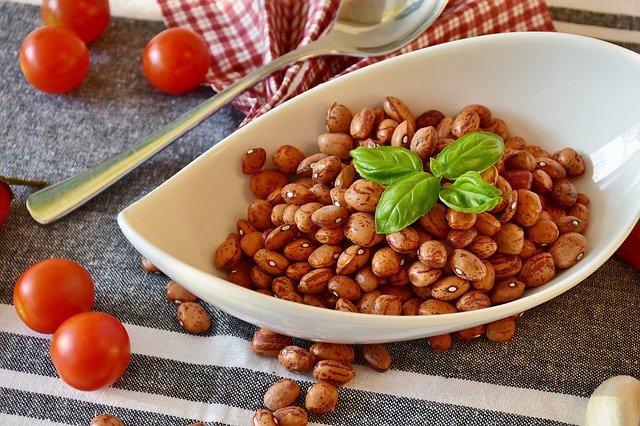
Edible seeds of the plants in the family Fabaceae, the third-largest family of plants.
Common edible legumes are beans, lentils, soybeans, peas, and chickpeas.
Legumes have pods that split open when ripe on two sides.
Seeds can be cooked in soups and stews, added to salads, or served as a side dish.
The nutritional value of legumes can vary based on the type, but they are typically high in fiber and protein and a valuable source of different vitamins and minerals.
Lemon
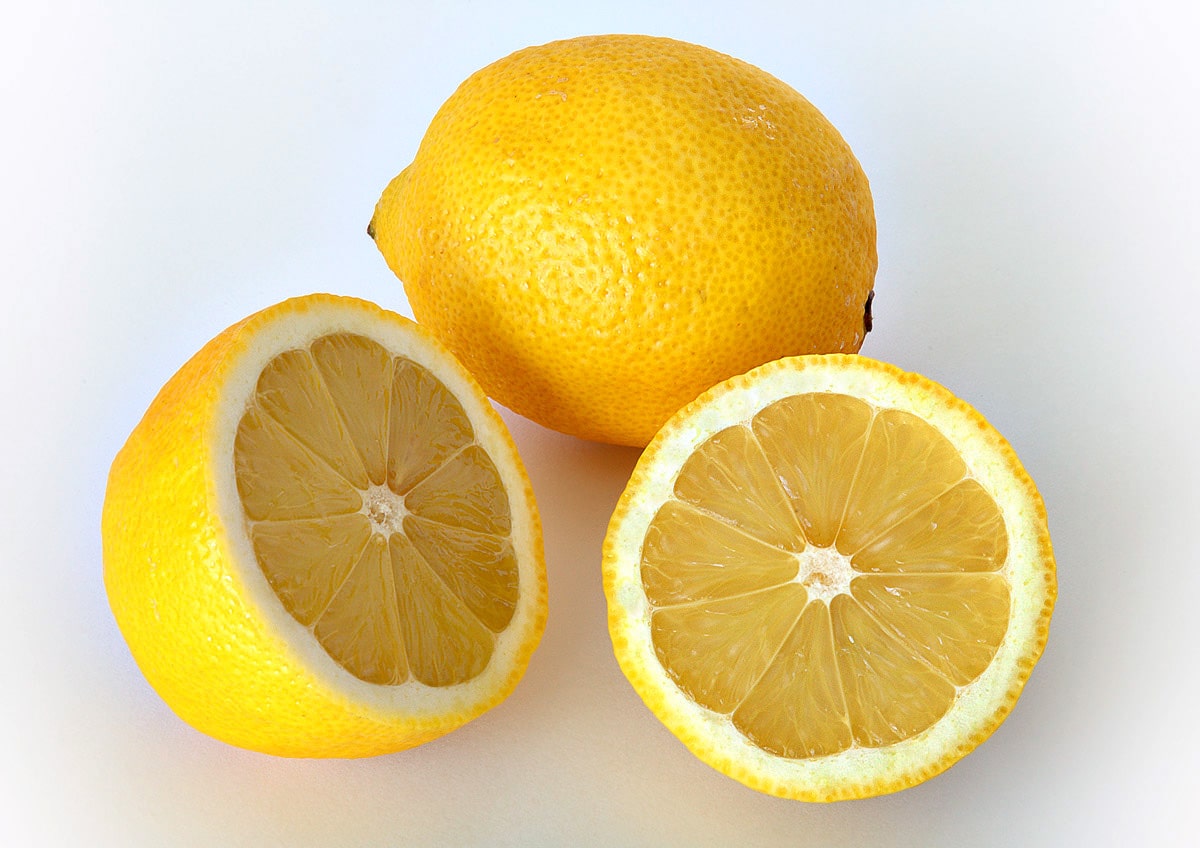
Citrus fruit with vibrant yellow skin and juicy, sour-flavored flesh.
Lemons are found in the family Rutaceae, native to India.
Lemon juice is used for making lemonade juice, lemon liqueur (limoncello), dressings, and sauces.
It can be drizzled over salads, chicken, or fish.
Lemon zest and juice are used in baked desserts to add fresh, acidic flavor.
This fruit is a powerful antioxidant, rich in vitamin C.
One lemon provides more than 50% of the recommended daily amount of vitamin C.
Lemonade

Lemonade is a drink made with water, lemons, or lemon juice, and sugar.
There are two main types: cloudy, and clear, each known simply as “lemonade” in their home countries.
Cloudy lemonade, generally found in North America and India, is a traditionally homemade drink made with lemon juice, water, and sweetened with cane sugar or honey.
Clear lemonade is a lemon, or lemon-lime flavored, carbonated soft drink.
This type is common in the United Kingdom, Ireland, Australia, and New Zealand.
Lemongrass
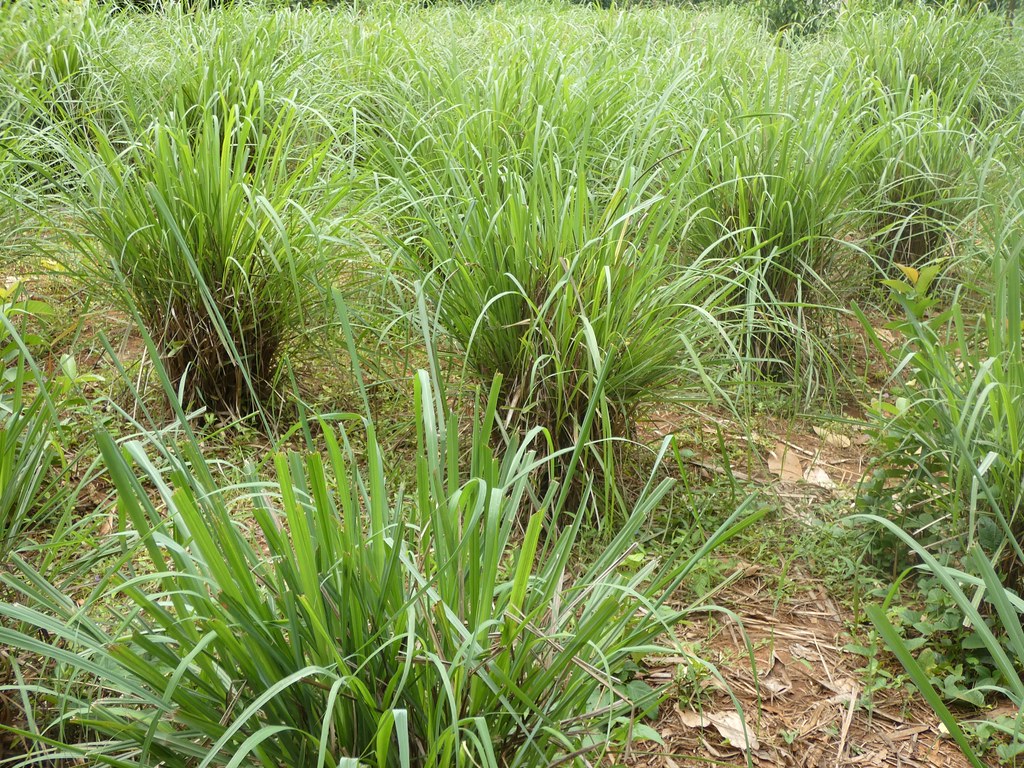
Lemongrass is a genus Cymbopogon of the family Poaceae (grass family).
It includes various species cultivated in Asia, Africa, and Australia.
Lemongrass is made of a green stalk, resembling scallions.
It is used for its citrus fragrance and taste.
Lemon Tart
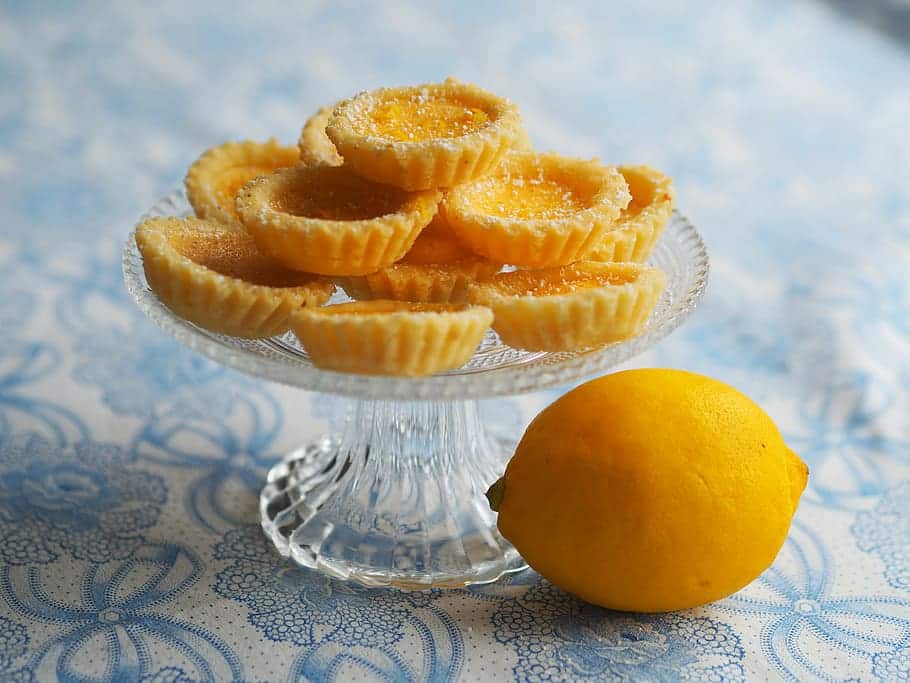
A dessert composed of a pastry crust and a sweet-sour lemon-flavored filling.
The filling can be made of creamy lemon custard.
This tart is a mix of sweet, sour, and bitter flavors.
This dessert originated in France, but it is famous worldwide, made with some modifications of the classic recipe.
Lentils
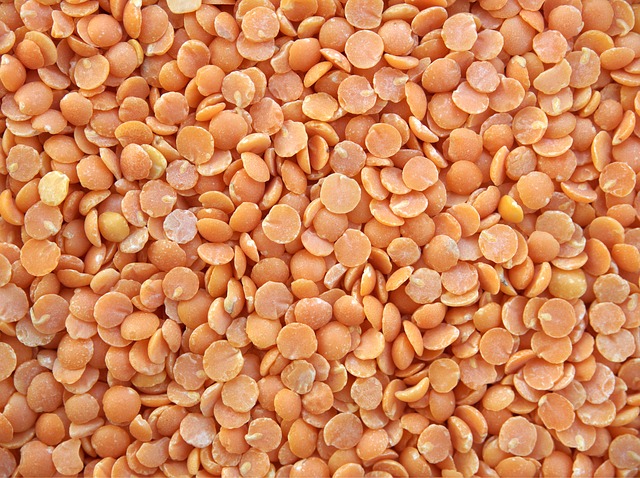
Small, flat seed of a plant of a legume family.
Lentil seeds grow inside pods that can range in color from green to purple.
They have an earthy, peppery taste.
These legumes are native to Western Asia and North America and can be classified as split or whole and shelled or unshelled.
Shelled lentils come in yellow, red, orange, or green colors.
They can be cooked in soups and stews, boiled, fried, or baked as a part of many different meals.
Lettuce
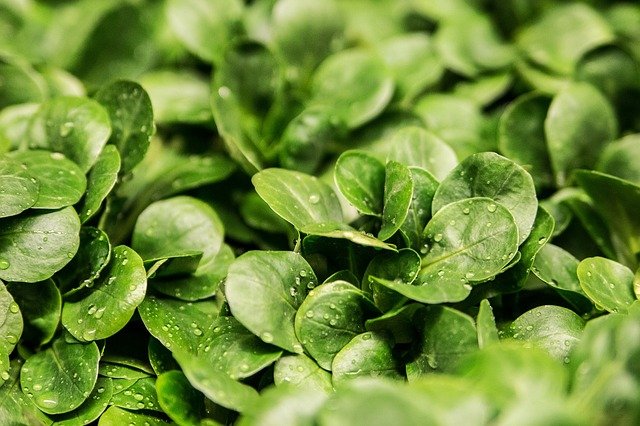
A leafy vegetable of the family Asteraceae, native to ancient Egypt.
Lettuces come in a variety of shapes, sizes, and colors.
Their texture can be dense like iceberg or tender like butterhead type.
These vegetables are rich in vitamins A, B, and K and a good source of minerals (iron, manganese, potassium, magnesium).
They are most commonly used fresh in salads and sandwiches, but they can be cooked or fried as well.
Leaf Lettuce
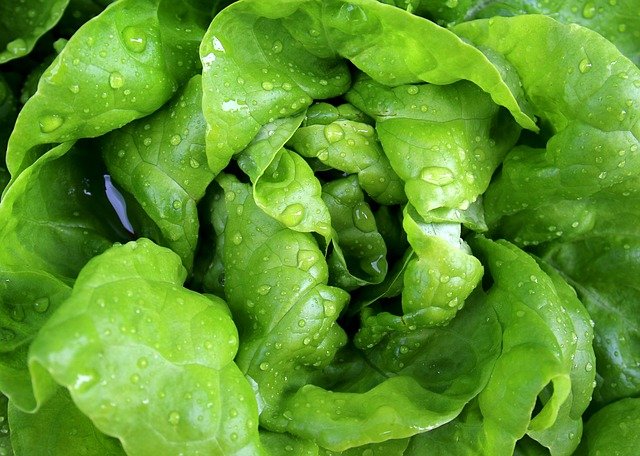
A variety of lettuce, also known as looseleaf lettuce.
Three types of leaf lettuce are oak, red and green.
Leaves of these lettuces branch from a single stalk, and they have a mild flavor, although oak leaf lettuce is slightly spicy.
They are mainly consumed as a salad.
Leipziger allerlei
Leipziger Allerlei is a regional German vegetable dish that may be served as a main or side course.
It is named after the city of Leipzig and consists of a mixture of various vegetables such as young peas, carrots, green beans, asparagus heads, morels, and celery Cauliflower and kohlrabi are often added; occasionally onions are used too.
There are numerous variations to the basic recipe.
A classic Leipziger Allerlei also includes a sauce made from crayfish butter, crayfish tails, and semolina dumplings.
Licorice
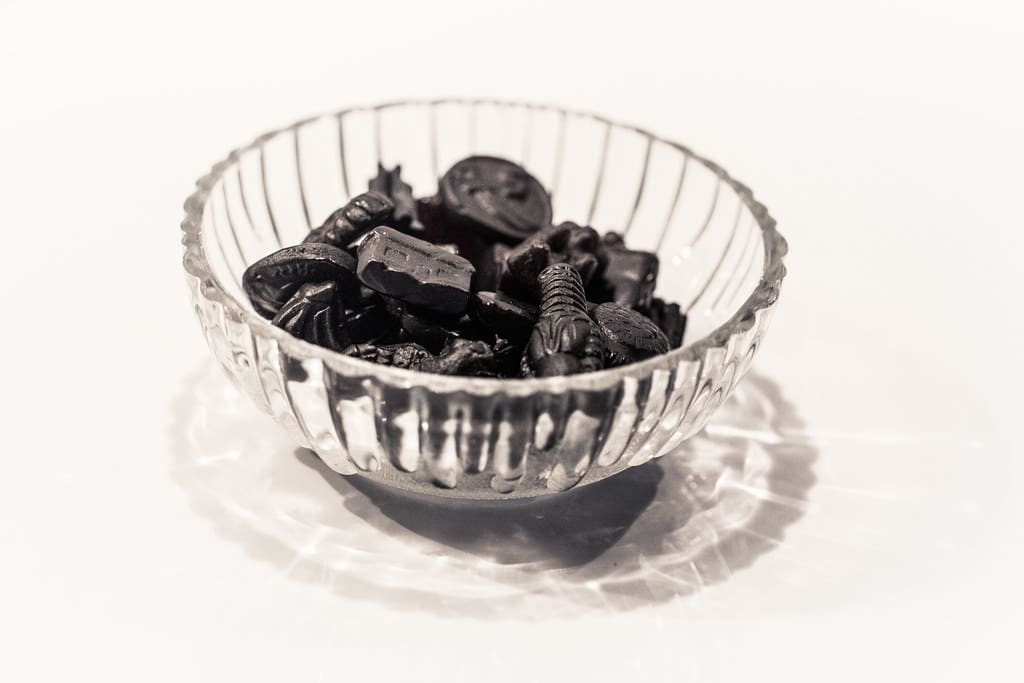
Licorice is a confection usually flavored and colored black with the extract of the roots of the licorice plant Glycyrrhiza glabra.
A wide variety of licorice sweets are produced around the world.
In North America, black licorice is distinguished from similar confectionery varieties that are not flavored and colored black with licorice extract but commonly manufactured in the form of chewy ropes or tubes.
So-called “black licorice” together with anise extract is also a widespread flavor in other forms of confectionery such as jellybeans.
Liederkranz
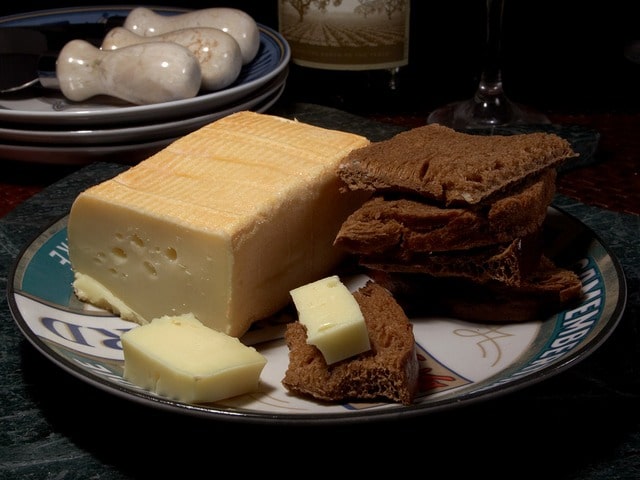
Liederkranz is an American replication of Germany’s Limburger cheese, made subtly different by the use of a distinct bacterial culture for ripening.
It has the same texture and unique aroma as Limburger but features a distinctively robust and buttery flavor.
Similar to Limburger, it’s made in small, rectangular blocks and has a moist, edible, golden yellow crust with a pale ivory interior and a heavy, honey-like consistency.
Lima Beans
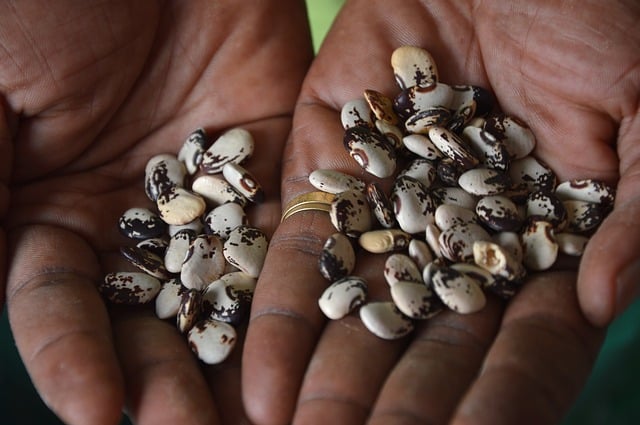
A type of oval or kidney-shaped beans, mainly white-colored.
Other varieties include seeds of orange, black, or red colors.
They are also known as butter beans or Madagascar beans.
They are native to Mesoamerica and South America, where they were first time discovered in Peru.
These beans, besides fiber, provide good amounts of vitamins B, iron, potassium, magnesium, phosphorus, and manganese.
Lime
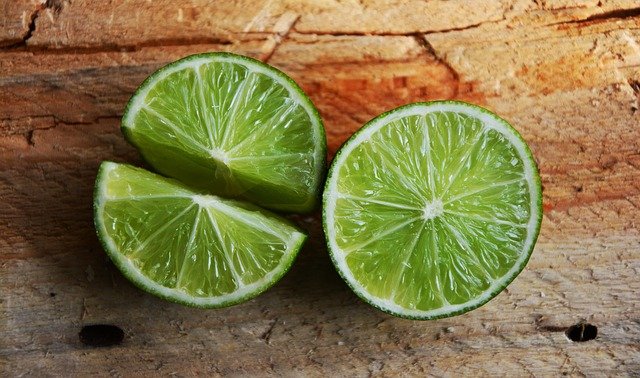
Small citrus fruit, cultivated in many varieties, including the most commonly used Key lime and Persian lime.
These fruits have juicy, pale green pulp and thin green skin.
Both pulp and skin can be used.
They taste sour and tart but add a fresh, citrus fragrance to any dessert.
The juice can be consumed fresh in cocktails or limeade drinks.
Lime juice and zest can be a good substitute for lemon.
Lingonberry
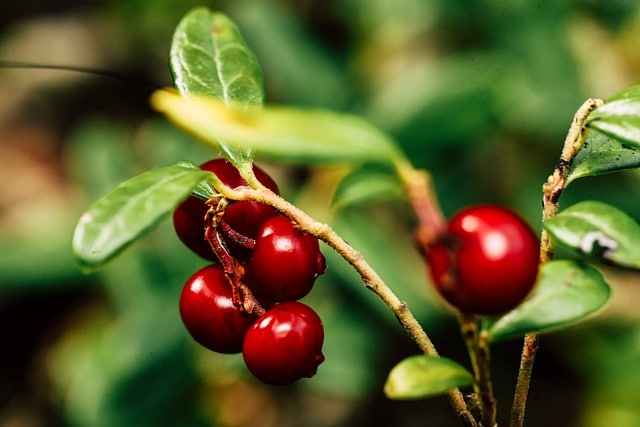
Lingonberry, a member of the blueberry and cranberry family, has for centuries been a staple in Scandinavia.
Rich in antioxidants, vitamins, and magnesium, the tart yet lightly sweet berries are appearing in places they haven’t before.
The berries are available fresh only in the regions where they’re grown.
The berries have a sour/tart/slightly sweet flavor and are eaten raw or used to make sauce, juice, jam, wine, and baked goods.
Lingonberries are rich in antioxidants, vitamins A and C, and magnesium.
Lingonberry extracts have several medicinal uses such as a component for cough syrups.
Let’s take a look at the various forms of lingonberry on the menu, in social media, and in new products.
Linguica
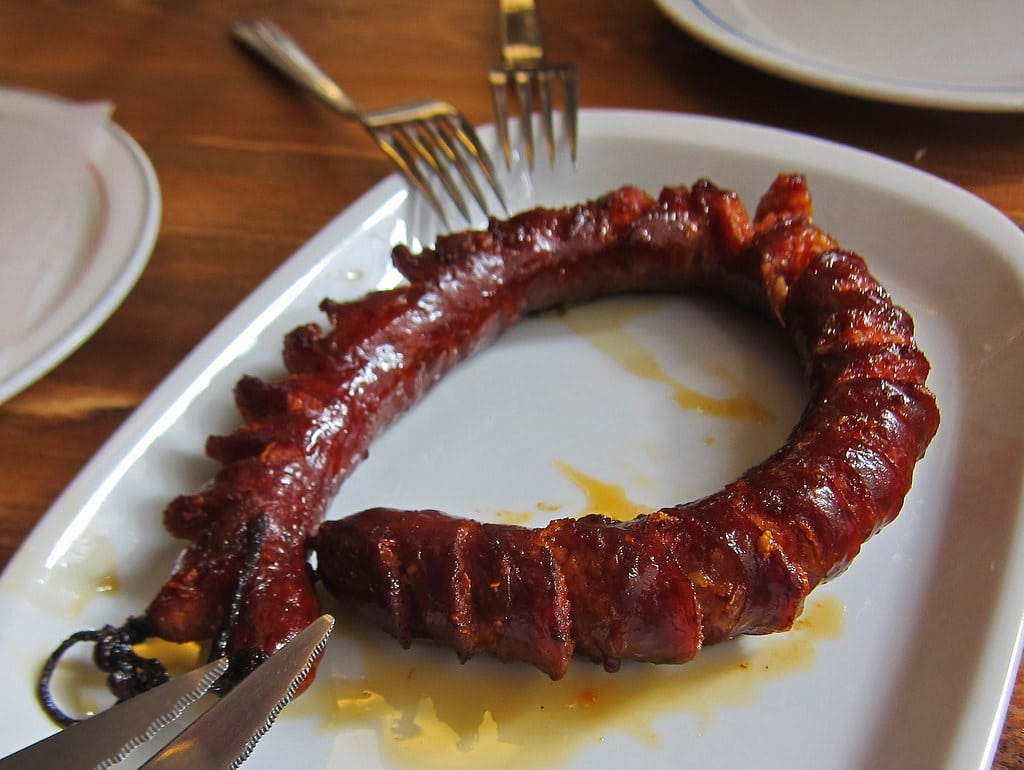
A linguica is a form of Portuguese smoke-cured pork sausage seasoned with garlic and paprika.
Linguica, like many other sausages, is generally served as part of a heavy meal, typically accompanied by rice, beans, and other pork products.
Feijoada, for example, is a traditional Portuguese dish, also common in Brazil and Angola, that incorporates linguica with beans, ham hocks, and other foods.
Linguica is also used in Francesinha, a traditional Portuguese dish, from Porto.
It can be incorporated into its sauce, giving it a distinct flavor.
Linguine
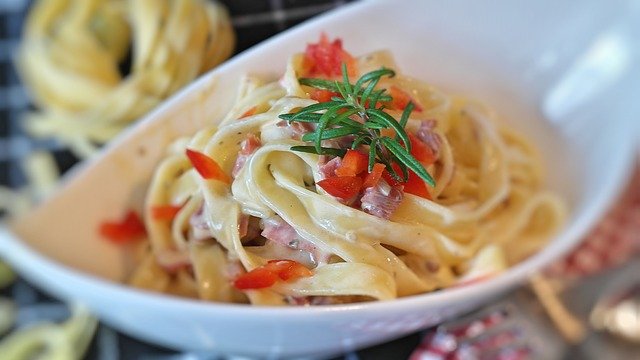
Long, flat, oval-shaped pasta, made from white or whole-wheat flour.
It is native to Italy where it is usually served with pesto or seafood.
It resembles spaghetti, but it is made as flat rather than round strips.
Liver
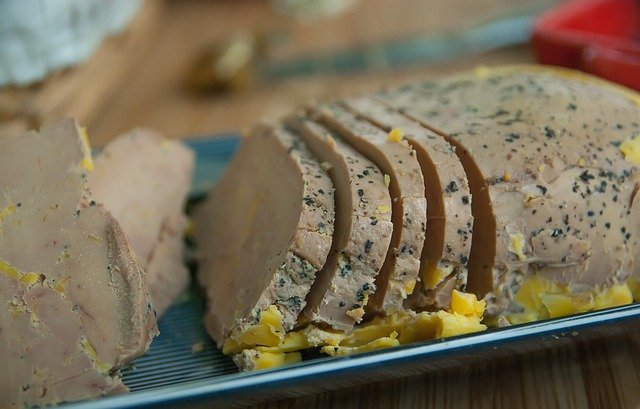
The liver of mammals, fowl, and fish are commonly eaten as food by humans.
Domestic pig, lamb, calf, ox, chicken, goose, and cod livers are widely available from butchers and supermarkets while stingray and burbot livers are common in some European countries.
Animal livers are rich in iron, copper, the B vitamins, and preformed vitamin A.
It is unsure if daily consumption of liver can be harmful, as no conclusive research has been done on the toxicity of preformed vitamin A from food.
A single serving of beef liver exceeds the tolerable upper intake level of vitamin A.
100 g cod liver contains 5 mg of vitamin A and 100 µg of vitamin D.
Liverwurst
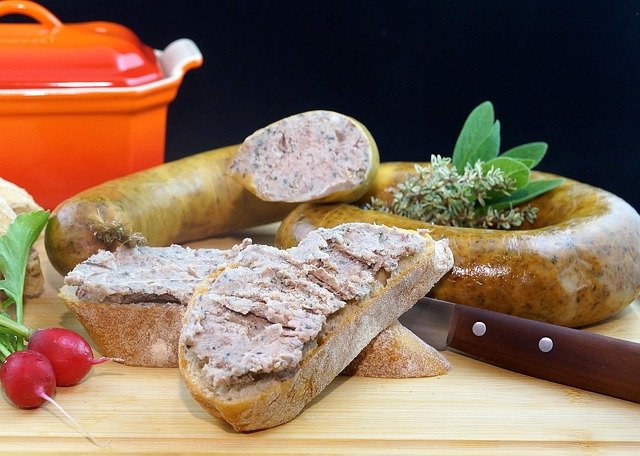
Liverwurst is a seasoned and spreadable meat-based product that comes in the shape of a sausage.
Originating in Germany, liverwurst is particularly famous across Europe, and it is widely available throughout the world.
Liverwurst typically comes in two main varieties; one has a firmer (but very soft) texture, and it is sliceable.
The other form of liverwurst is spreadable, and it looks somewhat similar to pâté.
Liverwurst is made of three primary ingredients; meat, organ meat, and fat.
These ingredients are usually from either beef or pork.
Generally speaking, the primary organ of meat is the liver (hence the product’s name).
However, liverwurst may include other organ meats such as the heart or kidney.
Loaf cake
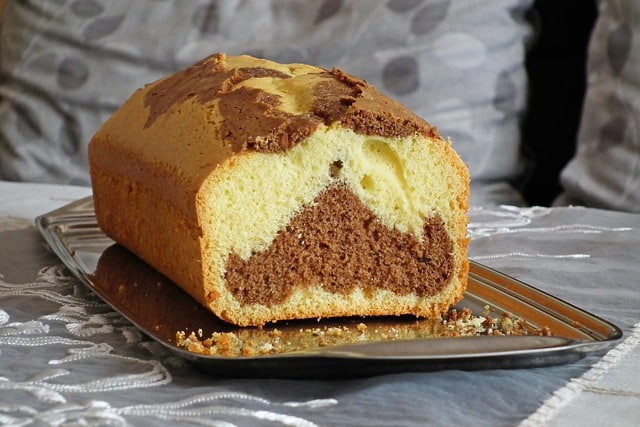
A loaf cake is made in a bread loaf pan, as its name implies.
Also known as quick bread, these cakes can incorporate a wide variety of ingredients, such as fruit and nuts.
Popular ingredients for loaf cake include bananas, walnuts, pumpkin, and zucchini.
Lobster
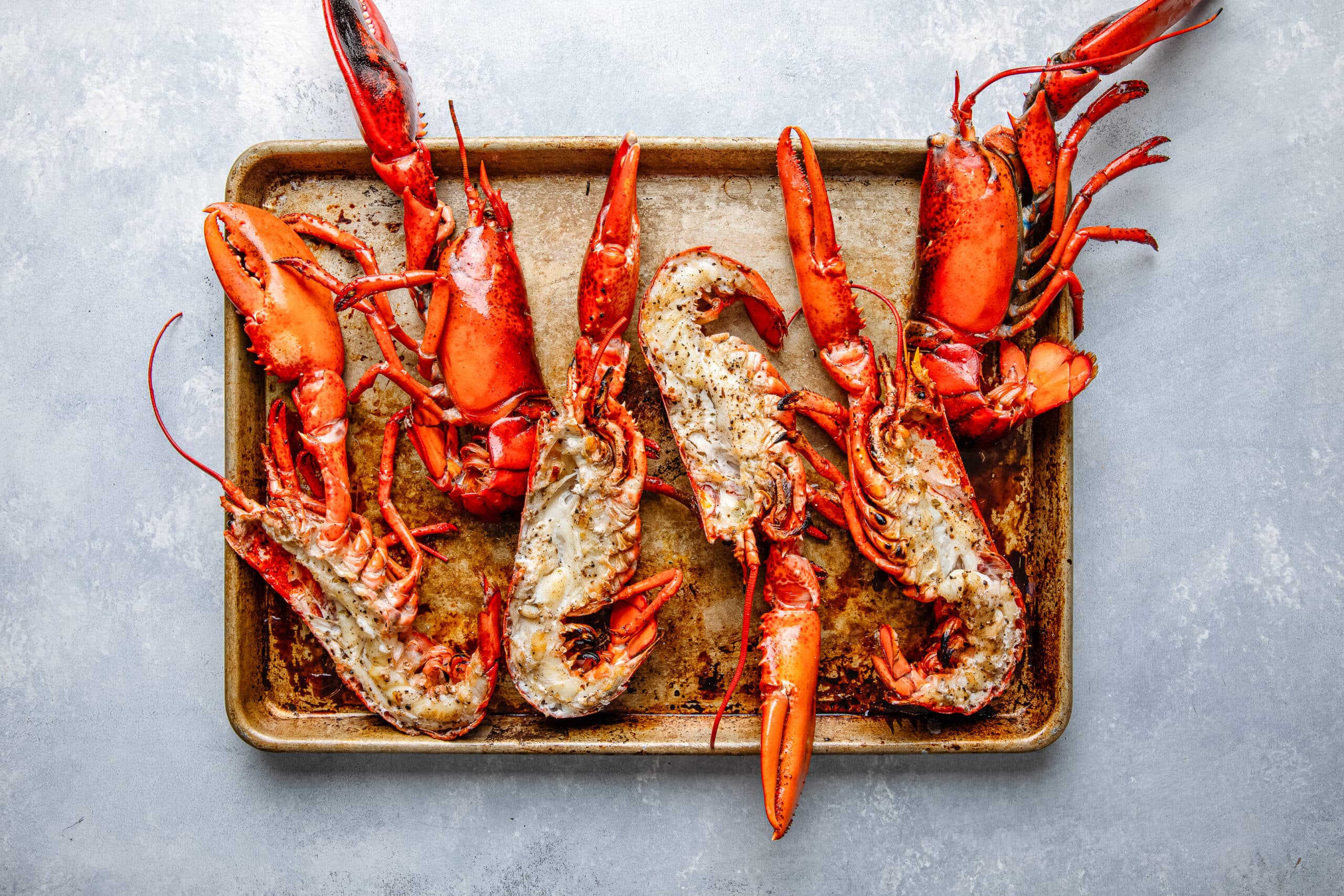
Large seawater crustaceans with long bodies and large front claws and tails.
They are used as seafood and can be boiled or steamed.
Lobsters are naturally dark colored but after being boiled in water, they turn orange.
Lobster meat is often eaten with lemon juice and garlic butter or dipped in sauce.
Lohikeitto
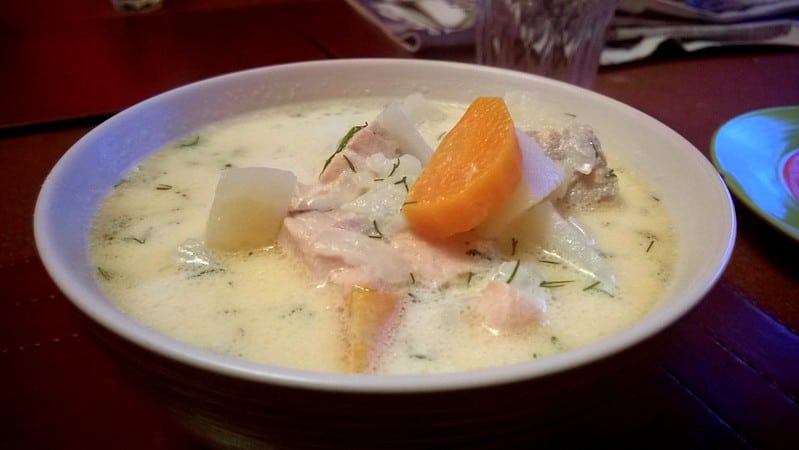
Lohikeitto – creamy salmon soup is a common dish in Finland and other Nordic countries.
It consists of salmon fillets, boiled potatoes, and leeks.
The soup is served hot, with some dill.
There is a discussion about the ingredients of the dish, whether milk should be used as an ingredient.
Milk may be substituted for cream, however, it must be whole milk.
Loin
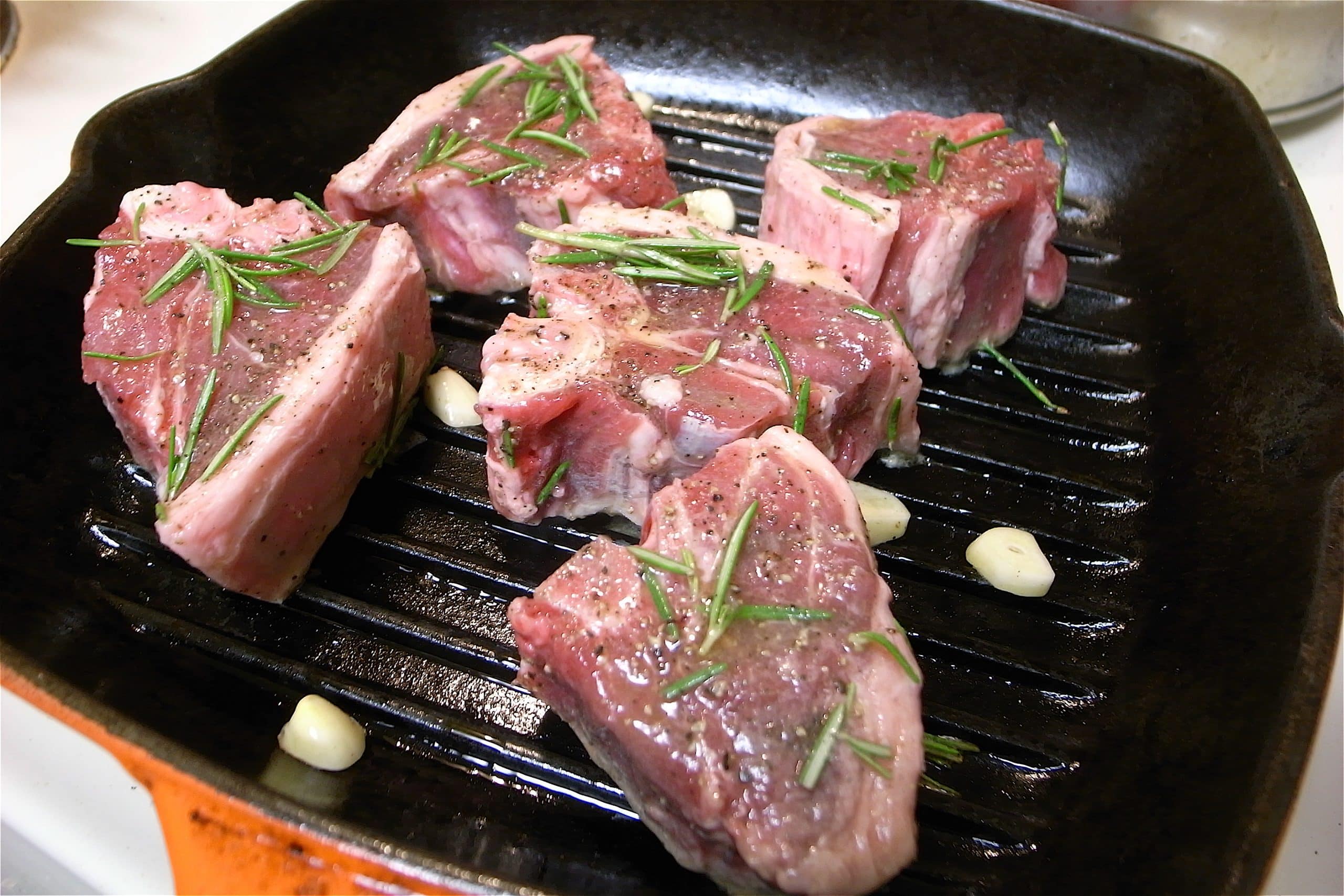
The loin is a cut of meat comprising this part of one or both sides of a carcass with the adjoining half of the vertebrae included but without the flank.
Loin, that part of an animal lying between the upper part of the hipbone and the last of the false ribs on either side of the backbone—hence, the butcher’s term for a piece of meat cut from that part of the body.
Lollipop

A lollipop is typically round-shaped sugar candy on a stick that can be made in many flavors and colors.
It is made of sugar, corn syrup, and water, combined with flavorings and food coloring.
They are usually made in fruit flavors, while some types can come with chewing gum inside.
Longaniza
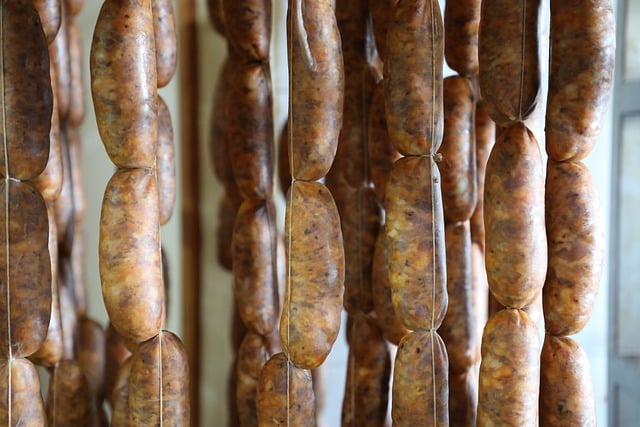
Longaniza is a Spanish sausage similar to chorizo and also closely associated with the Portuguese linguiça.
Its defining characteristics are interpreted differently from region to region.
It is popular in the cuisines of several regions of Spain, Argentina, Uruguay, Puerto Rico, Dominican Republic, El Salvador, Mexico, and Chile.
In the Philippines, it is called longganisa and differs greatly with hundreds of variants with different vernacular tastes and forms due to the 144 ethnolinguistic groups in the archipelago.
Loquat
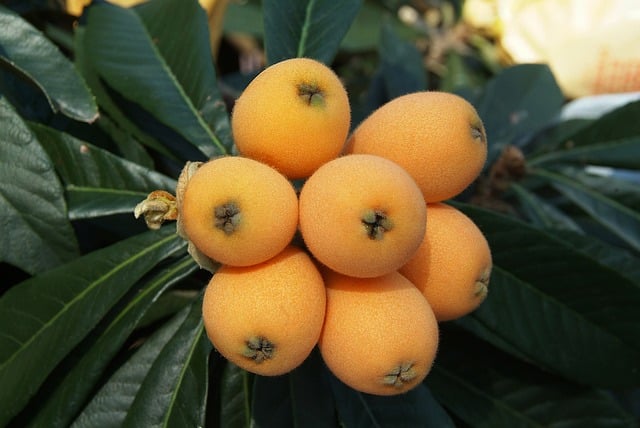
The loquat (Eriobotrya japonica) is a large evergreen shrub or tree, grown commercially for its orange fruit and for its leaves for tea (known as “biwa cha” in Japan), and also cultivated as an ornamental plant.
The loquat is in the family Rosaceae and is native to the cooler hill regions of south-central China.
Loquat fruits, growing in clusters, are oval, rounded or pear-shaped, 3–5 centimeters (1–2 in) long, with a smooth or downy, yellow or orange, sometimes red-blushed skin.
The succulent, tangy flesh is white, yellow, or orange and sweet to subacid or acid, depending on the cultivar.
Each fruit contains from one to ten ovules, with three to five being the most common.
A variable number of the ovules mature into large brown seeds (with different numbers of seeds appearing in each fruit on the same tree, usually between one and four).
The fruits are the sweetest when soft and orange.
The flavor is a mixture of peach, citrus, and mild mango.
Love in disguise
Love in disguise is a British dish which of stuffed lambs, pigs, or calves hearts.
It is cooked by stuffing a calf’s heart, surrounded by an inch of forcemeat, then rolled in vermicelli and finally baked in an oven.
The dish can be served with its own gravy.
It was first noticed in Kettner’s Book of the Table 1887.
Lychee
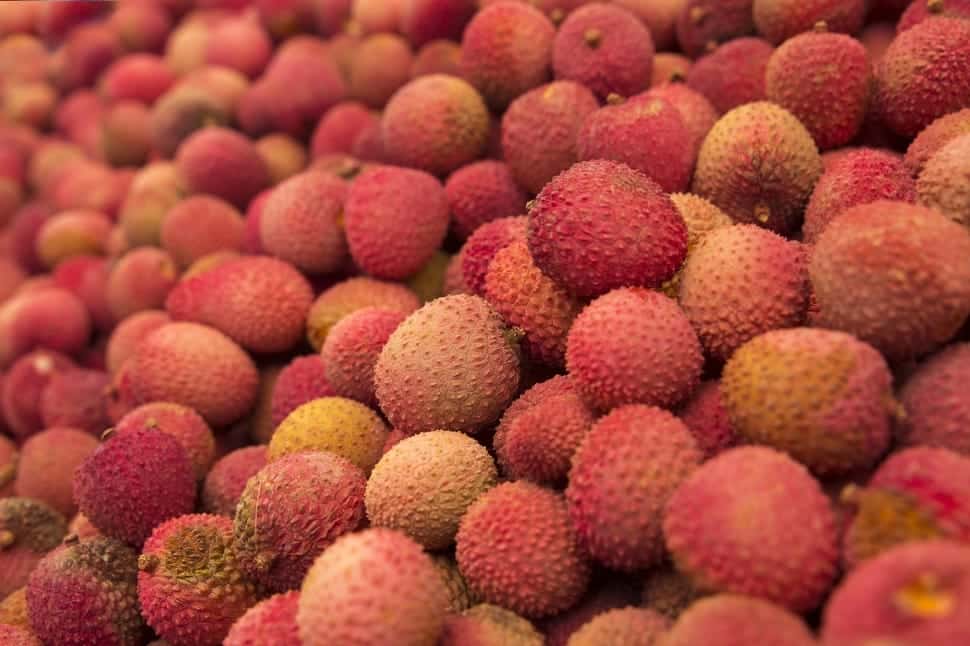
Small fruit with a hard pink shell and sweet white flesh.
This is a fruit of the soapberry family, native to China.
They can be round or heart-shaped.
The skin is inedible, while flesh has s musky, sweet flavor and a gelatinous texture.
It is eaten fresh or in desserts.
Longan Berry
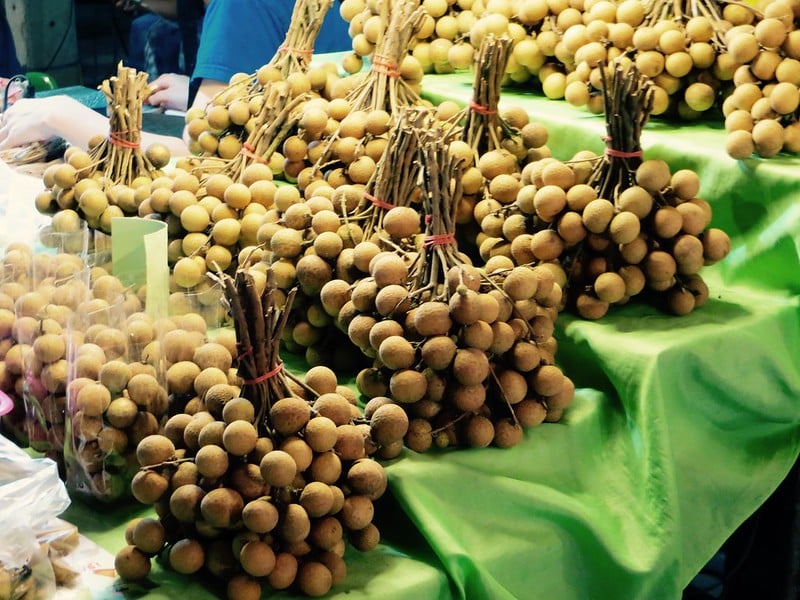
Tropical fruit of the soapberry family, similar in appearance to its relative, lychee, but milder in flavor.
It is small, round covered with a thin shell and white flesh and a large black seed inside.
It was originally cultivated in Asia.
Its name translated from Cantonese means ‘’dragon eye’’, which refers to the unshelled fruit which resembles an eye.
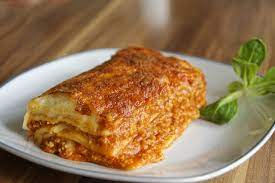
How To Make The Ultimate Italian-Inspired Lasagne Dolmio
Ingredients
- 1 packet Lasagne sheets
- 500g minced Chicken
- 1 bottle white Dolmio sauce
- 1 bottle Dolmio Pasta sauce
- 2 tablespoons Dark soya sauce
- 2 tablespoons Ketchup
- 2 tablespoons Mayonnaise
- 4 large carrots
- 5 handfuls Baby spinach
- 5 cloves garlic
- 2 cups halved button mushrooms
- 1 large onion
- 1 yellow bell pepper
- 1 green bell pepper
- 1 red bell pepper
- 1/2 teaspoon salt
- 1/2 teaspoon Pepper powder
- Grated Parmesan Cheese
- Grated mozzarella cheese
Instructions
- Fill water in a large pot, pour 2 tablespoons of oil, and heat to boil.
- Turn the heat down to medium and position the lasagna sheets upright in the pan.
- As the lasagna sheets cook, they will gently slide down the pan.
- Boil the sheets for 10 minutes or more, stirring with tongs constantly to prevent them from sticking together.
- When they become tender, remove them gently from the pan.
- Set them apart in a tray and sprinkle some cold water on top.
- Place 2 tablespoons of olive oil in a large wok.
- Cut the onion and garlic into small pieces and cook them in oil.
- Then add the carrots and cook until tender.
- Add the halved button mushrooms to the pan and make square cuts out of three bell peppers with a knife.
- Stir-fry the vegetables for a few minutes until they’re tender and set aside.
- Flavor with pepper powder and salt as desired.
- On one side of the wok, put all the vegetables, and on the other, place the meat.
- Cook it until it turns color to a golden brown.
- Simmer over medium heat while frying constantly.
- Please don’t put the lid back on.
- Now is the time to put your Loyd spaghetti sauce.
- Add 2 tablespoons of mayonnaise, Dolmio soy sauce, and ketchup.
- 5.Add meat and vegetables and cook for a few minutes.
- Stir in the baby spinach when the sauce has thoroughly cooked.
- Avoid closing the lid as this will cause water to leak out.
- Get used to the new flavor.
- Make sure you have a large lasagne pan on hand.
- Place a layer of meat on the bottom of the pan.
- Then, using lasagne sheets, neatly cover the entire service of the meat and ensure the sheets aren’t overlapping.
- Put a layer of white sauce on top of the lasagna sheets.
- Spread some cheddar cheese on top.
- Add a second layer of meat.
- Add the white sauce to the pan again and sprinkle additional cheese.
- Continue this process till the dish is filled to the brim.
- Sprinkle with a generous amount of Parmesan cheese.
- Add a generous amount of Mozzarella to the top.
- Preheat the oven to 350 degrees Fahrenheit and bake on the center shelf.
- Check it after 15 minutes.
- Once the top turns golden brown, remove the dish from the oven.
- Allow it to rest for 10 minutes before serving.
- Using a spatula dipped in water, gently slide the pieces onto plates.
- It’s delicious when served warm with garlic bread or on its own.
- The original lasagne Dolmio recipe has countless variations, but none can compare to this variety’s versatility and sheer deliciousness.
- It’s hearty and tastes incredible with pasta dishes such as spaghetti Bolognese.
